The ADLINK Pocket AI portable GPU is a new twist on the classic concept of external GPUs, or eGPUs. The Pocket AI is a Thunderbolt 3, NVIDIA RTX A500 4GB GDDR6 GPU in a form factor that is not much bigger than a deck of playing cards. ADLINK is marketing the portable GPU as useful for AI work, hence the name, but it can be used for anything which requires a GPU, such as rendering and video editing.
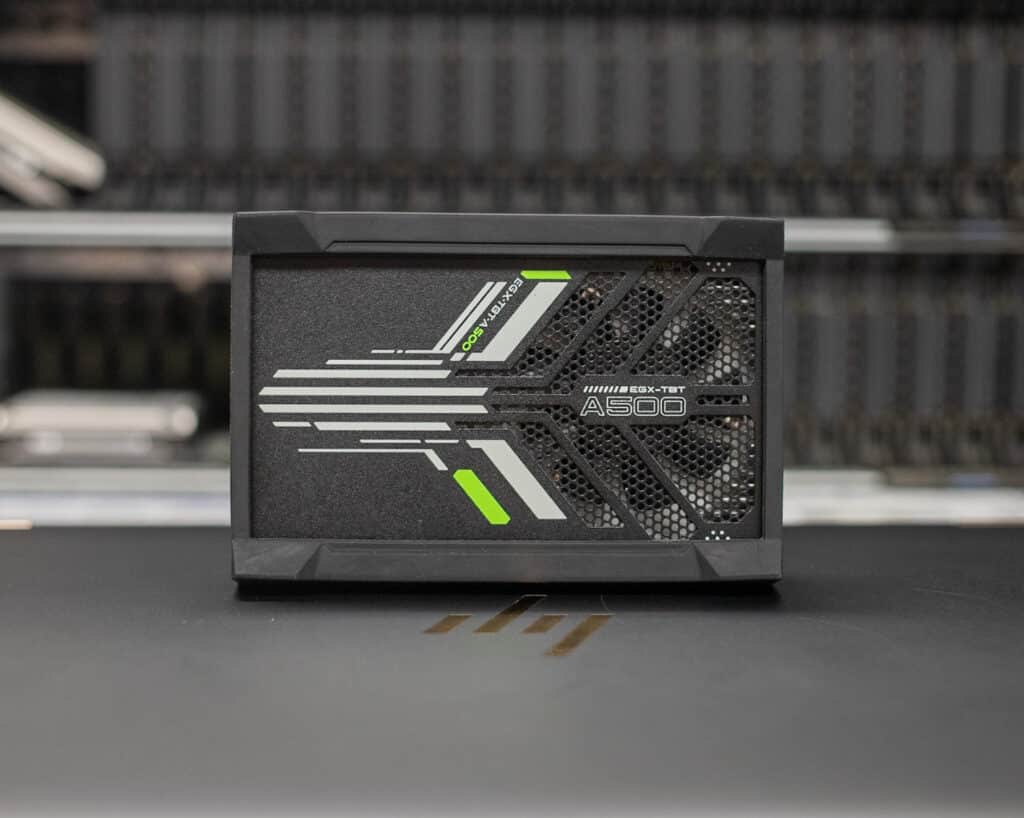
The purpose of this little GPU is to give a computer an extra boost so it can run GPU-intensive applications. With a list price of $429, this GPU may be worth it for individual users or offices who need a temporary upgrade to their system for a project.
The cost of the whole PocketAI GPU, which we would like to see come down a little, is far cheaper than other mainstream offerings on the market. eGPUs have been popular for a while; a Thunderbolt enclosure/dock that has a PCI-e slot and a PSU that you bring your own GPU allow for high-end 3D and Accelerated performance to be added to notebooks or AIOs, however even the enclosures can run higher than the ADLINK Pocket AI.
The A500 is pretty mighty for its small size. The GPU has 2048 NVIDIA CUDA cores, 64 NVIDIA tensor cores, and 16 NVIDIA RT cores. It also has 100 TOPS DENSE INT8 in inference, 6.54 TFLOPS peak FP32 performance, and NVIDIA CUDA X RTX software enhancements. The Pocket AI GPU has support for Thunderbolt 3 and up. The GPU is compatible with Windows and Linux.
ADLINK Pocket AI Specifications
| GPU Architecture | NVIDIA Ampere GA107 |
|---|---|
| GPU clock | Base clock: 435 MHz Boost clock: 1335 MHz |
| CUDA Cores | 2,048 |
| NVIDIA Tensor Cores | 64 |
| NVIDIA RT Cores | 16 |
| Graphic Single-Precision Floating Point (TFLOPS) | 6.54 TFLOPS |
| GPU Memory | 4 GB GDDR6 |
| Memory Clock | 6001 MHz |
| Memory Interface Width | 64-bit |
| Memory Bandwidth (GB/sec) | 96 GB/s |
| TGP | 25 W* |
| Interface | Thunderbolt 3.0 (PCI Express 3.0 x 4) |
| Dimensions | (without rubber case) 106mm x 72mm x 25mm (with rubber case) 110mm x 76mm x 32mm |
| Weight | 250g |
| NVENC | NVDEC | 1x | 2x |
| Operating System | Windows 10 Windows 11 Linux** |
| Operating Temperature | 0~40°C |
Build and Design
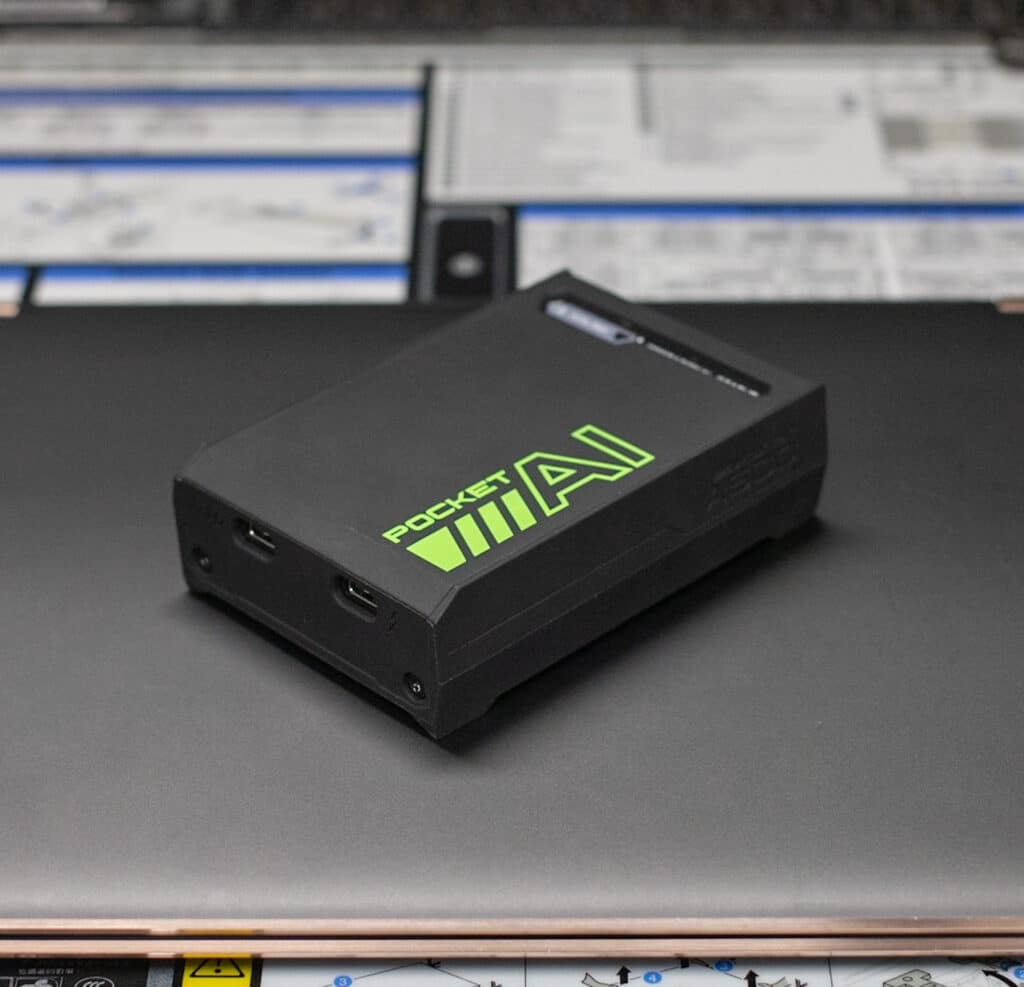
The Pocket AI is straightforward in terms of its layout. The GPU comes in a rubber sleeve that serves as a case to protect the GPU but, more importantly, to protect the user. The A500 gets hot and can be a hazard if users don’t keep it in the case. The sleeve also keeps the GPU in place to keep it from sliding off a table. Taking the sleeve off reveals the GPU’s black, silver, and green color scheme.
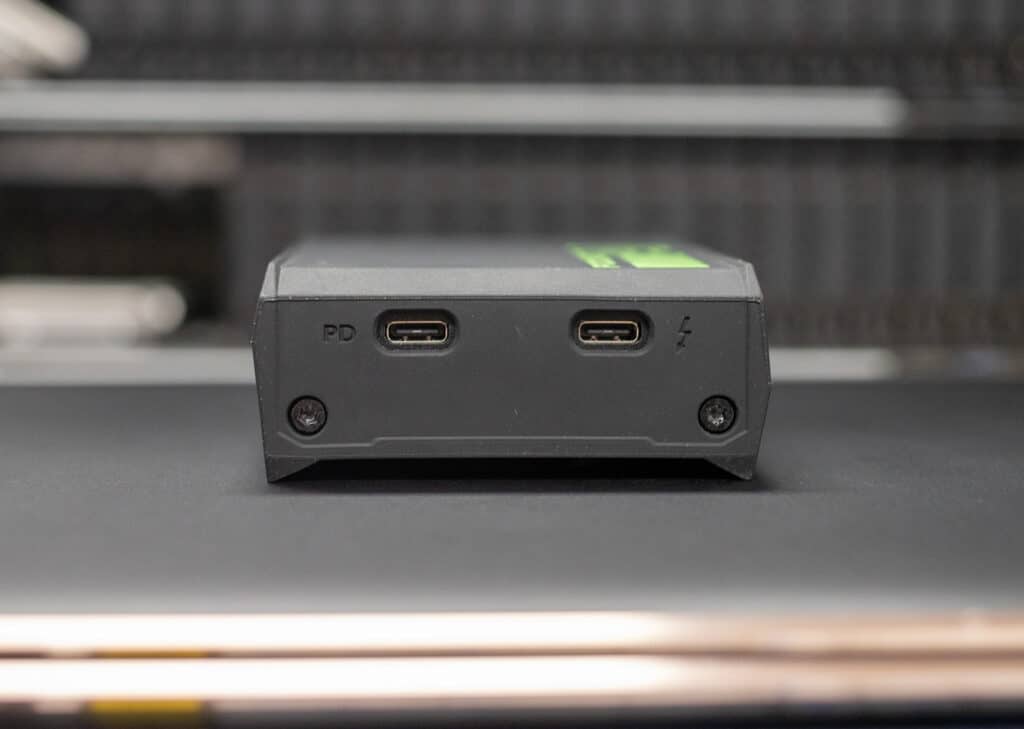
The two Lightning ports are located at the front of the GPU. The left port is used for Power Delivery (Labeled as PD), and the right port is the Thunderbolt for the data connection to your device.
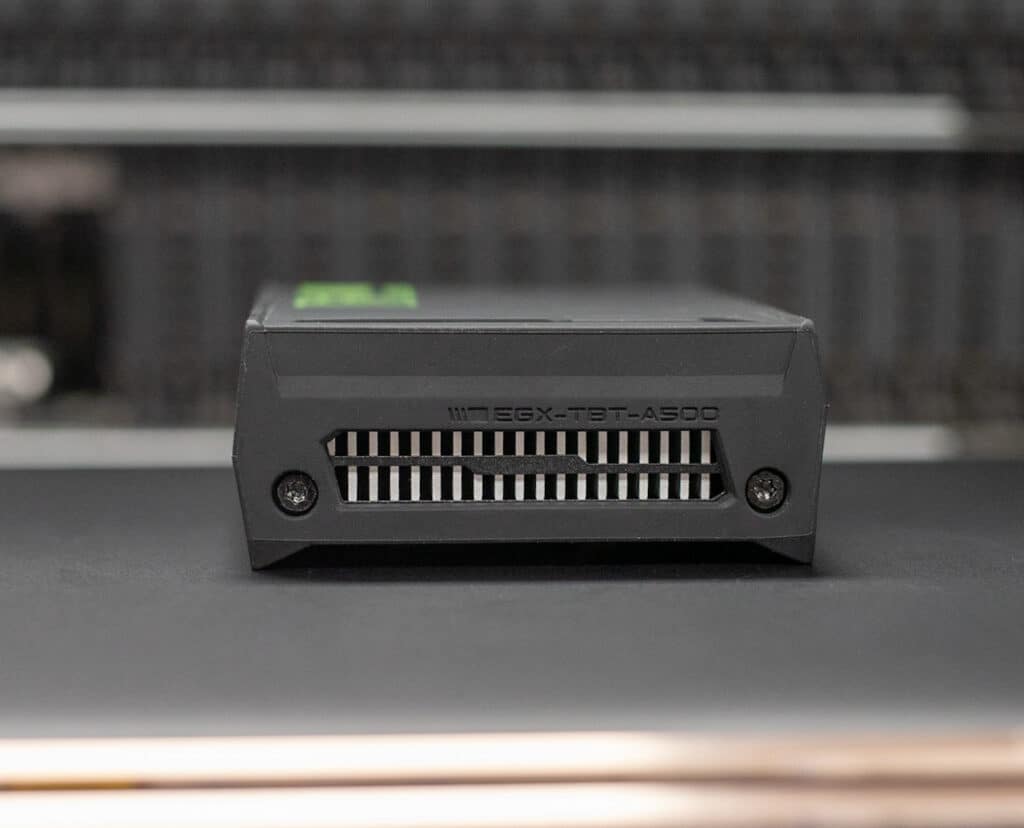
The intake fan is located on the bottom of the GPU. The air gets drawn in through the bottom and then expelled through a port on the rear of the case. ADLINK extended the sides of the casing downwards to allow airflow out the bottom. The sleeve helps, too; it is entirely open on the bottom to allow for airflow, and the rubber case elevates it further to get the GPU a little bit higher off the ground.
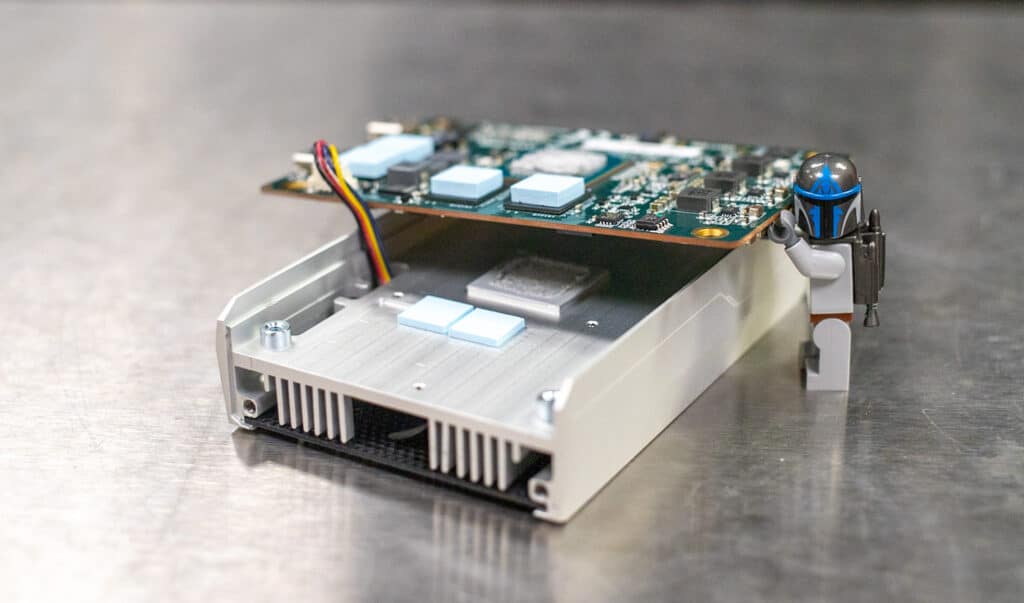
Around the top of the GPU is a simple status light and branding. Overall, the GPU design is impressive, with a futuristic feel.
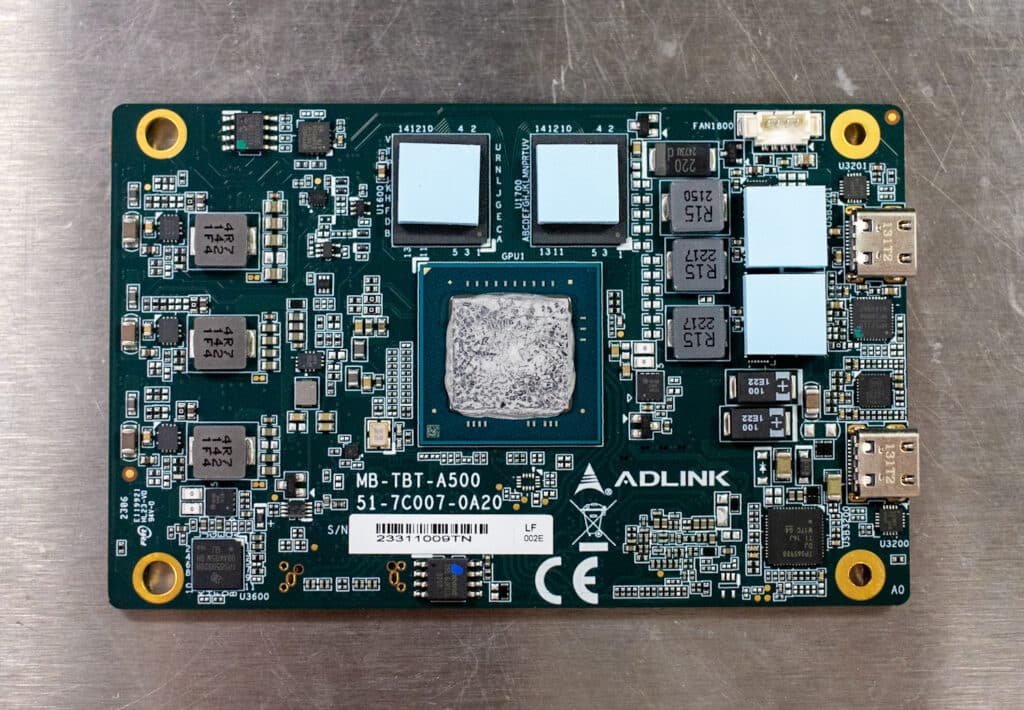
ADLINK Pocket AI Performance
For this review, we tested the ADLINK Pocket AI A500 GPU with Luxmark and UL Labs Procyon AI benchmark. The GPU performed as expected, with no observable bottlenecks from the interface. Its performance exceeded that of integrated graphics and fell in line with the GPU’s specifications.
| Benchmark | Iris XE 96 core | ADLINK Pocket AI |
A5000 Laptop GPU
|
| Luxmark Hall | 1828 | 3979 | 14,226 |
| Luxmark Food | 869 | 1837 | 5,499 |
| Procyon AI Inference | 59 | 264 | 651 |
While it is not a flagship GPU edition, it is clear the ADLINK Pocket AI boosts performance numbers in 3D rendering and AI Inferencing workloads. The 4GB of VRAM will be limiting, but it is better than nothing. If you have an ultraportable or a thin client type of system, this could be a good bridge solution for getting acceleration now rather than replacing the whole system at significantly higher costs.
Additional testing for 3D applications and Video rendering were not conducted at this time, but the PocketAI shows potential to also assist in those workloads.
Closing Thoughts
The ADLINK Pocket AI performed as any A500 GPU should. The GPU gets hot, so don’t remove the rubber sleeve, and take care to ensure proper airflow to the device. Yet the GPU brings new yet simple technology to the table. There are various use cases where this GPU would come in handy.
A user may need to do intense rendering work but is away from home and can only access their laptop with integrated graphics. The ADLINK Pocket AI can compensate for a laptop’s shortfalls and provide additional power. Additionally, the ADLINK Pocket AI can extend the useful life of notebooks that lack a GPU into the AI age because, in theory, it works across a plethora of operating systems. Preliminary testing showed Linux and MacOS (unofficial) support, which led to some interesting use cases.
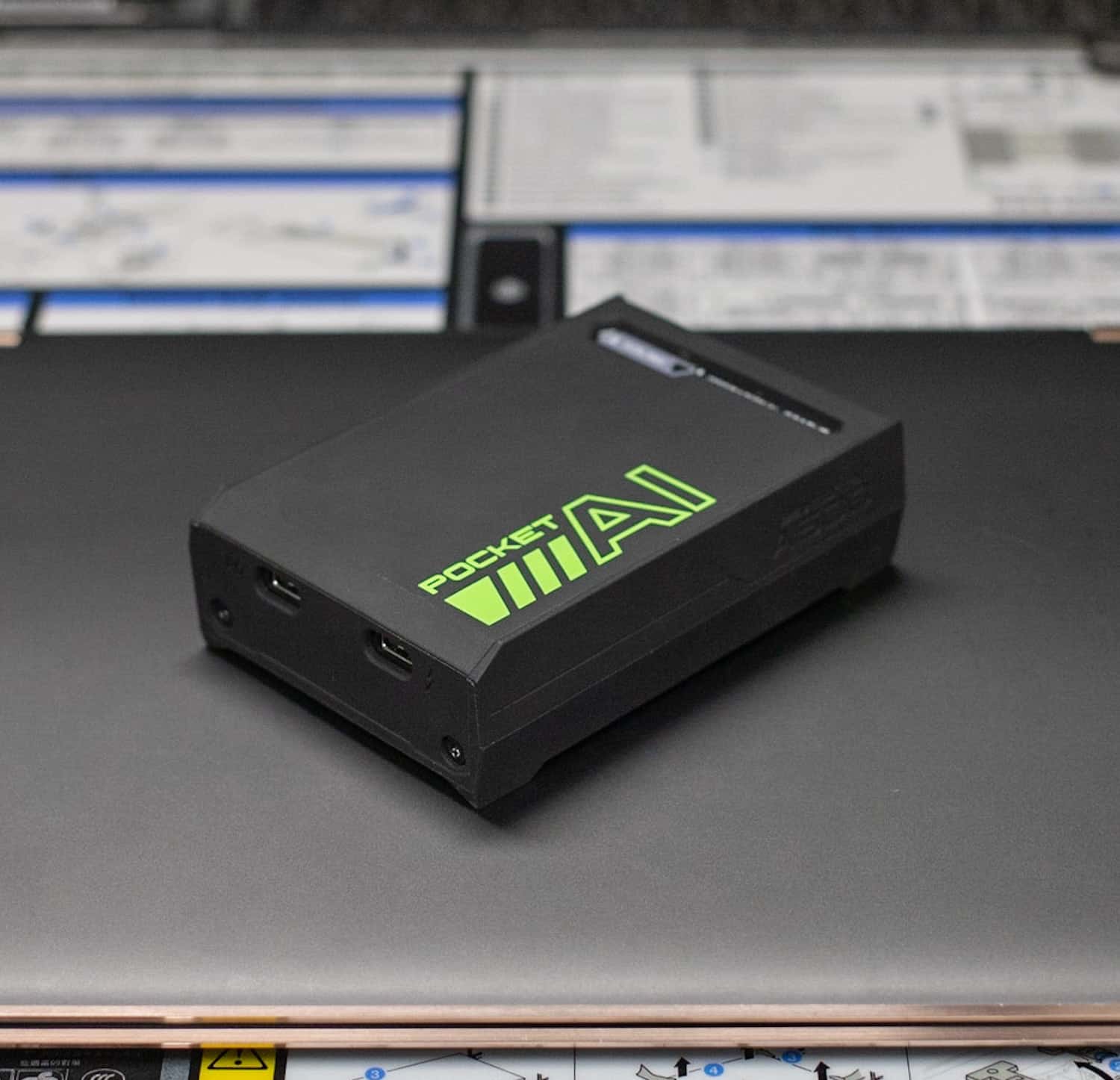
It could also be used in offices and distributed throughout the day between groups of employees. Depending on the project, more power might be needed, and an employee could borrow an ADLINK Pocket AI for the day if needed. With a price of $429, it could be cheaper to buy this instead of overhauling an office with new PCs depending on company needs.
Overall this is a neat little piece of kit and a welcome addition to the vast array of options for a spectrum of AI and GPU needs.




 Amazon
Amazon